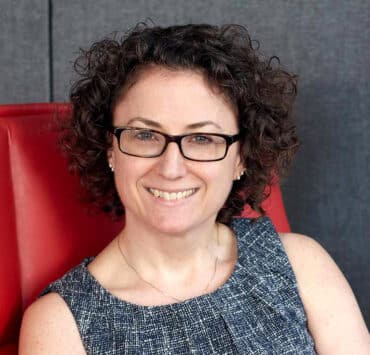|
Getting your Trinity Audio player ready...
|
When Derrek Niec-Williams was a student at Howard University, he spent hours studying in campus buildings. Now, he designs and renovates them.
Niec-Williams is Howard’s executive director of campus planning, architecture, and development, managing all aspects of a $2 billion real estate portfolio. “It’s a 24-hour, 7-day per week job with something always happening somewhere,” he describes.
Niec-Williams is accustomed to an around-the-clock workload. He used to spend countless hours lost in the tall stacks of books and research materials at Howard’s Undergraduate Library when he was a student in the historically Black college’s demanding five-year architecture program.
Then, the nondescript brutalist cube was little more than a collection of shelves with a few hard benches thrown in for good measure. Today’s modern study center stands in stark contrast. The old library was still and sterile. The new one buzzes with activity. The old library was uniform. The new one features various nontraditional study areas. “It’s obvious that student preferences and the way they take in material, study, and interact is changing,” he says. “We wanted the new library to change and evolve along with the students.”

The 90,000-square-foot renovation, completed in 2021, took eight years to realize. It features collaborative group seating, bookable study rooms, seminar spaces, a digital art studio, a faculty lounge, a café, a testing lab, subterranean archival storage, and classrooms. Howard’s faculty and staff are promoting collaborative work, and designers created the library in response. There’s just one problem.
“It won’t be quiet,” Niec-Williams says, “but we think that’s a good thing.” His teams installed advanced acoustical treatments to separate space into zones with different decibel levels to let students choose the type of environment that best suits their needs.
As Niec-Williams manages these projects, he’s careful to solicit opinions from students, staff, and others. “I have a history here, so that means I have to take myself out of it and make sure I’m not just building what I want because this place means so much to me,” he says. “Collaboration is vitally important.”
“It’s obvious that student preferences and the way they take in material, study, and interact is changing. We wanted the new library to change and evolve along with the students.”
Derrek Niec-Williams
That collaboration helped Niec-Williams find new success at Frederick Douglass Memorial Hall, where he once toiled as a student. In 2018, administrators closed the facility, designed by Albert Cassell in 1935, after ruptured pipes and failing heating units caused extensive damage. With the building closed, the office of real estate development and capital asset management held public town hall meetings to hear concerns and ideas regarding the historic building before embarking on a full renovation.
Those attending the town halls shared input regarding floor plans, restrooms, and privacy. Students wanted space to gather. Niec-Williams and his teams took the community’s feedback and transformed the former classroom building into a hub anchored by a student lounge and a glass curtain wall for increased visibility. Movable partition walls help class configurations flex and change on demand.
Since the building had received an historic landmark status, updates were restricted to the interior. Craftsmen and laborers restored barrel vault ceilings and other fine details of the 70,000-square-foot structure back to their original state. Howard is also partnering with the National Park Service to preserve the nearby historic home of Mary Church Terrell, which the civil rights activists deeded to the university upon her death. A recent National Park Service grant will allow crews to restore the exterior and convert the home into two units for staff and visiting professors.
These projects represent just a small part of the real estate work at Howard. The office manages complex capital projects, major commercial properties, and a nonprofit hospital. In March of 2022, officials announced the largest single real estate investment since the school opened in 1867. The $785 million, five-year plan will bring three multidisciplinary academic halls and unleash funds for needed renovations to existing structures. Additionally, the future campus will integrate a new hospital, medical office building, and cancer center.
“There is a rich history you can see here, and I’m honored to be a part of that.”
Derrek Niec-Williams
Niec-Williams is both proud and humbled to be involved in the initiatives. “I think of the other people in every role who have played a part in these campuses over the years, and I think about the people who have gone on from here to do great things. There is a rich history you can see here, and I’m honored to be a part of that,” he says.
As the child of two diplomats, Niec-Williams was something of a nomad. He was born in San Francisco but spent time in Michigan and Washington, DC. He grew up in West Africa, in the Caribbean, and in remote parts of the world. He has worked on planning and development projects from coast to coast. In all those travels, Niec-Williams was looking for something that he never really found until he came to Howard as a student and later returned as staff. He finally found a place that fit. He finally found—and is helping to build—his home.


